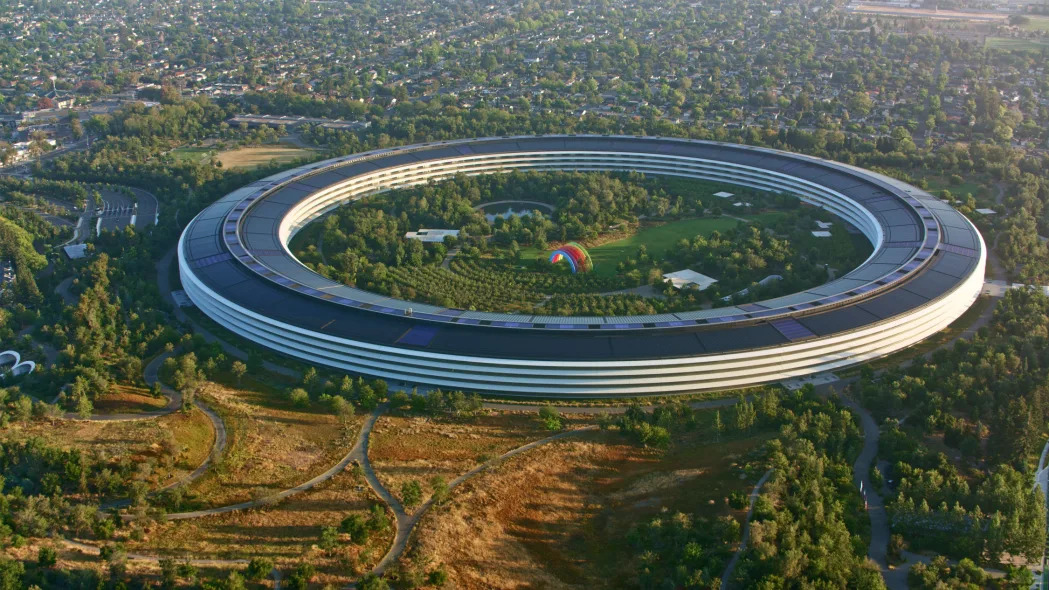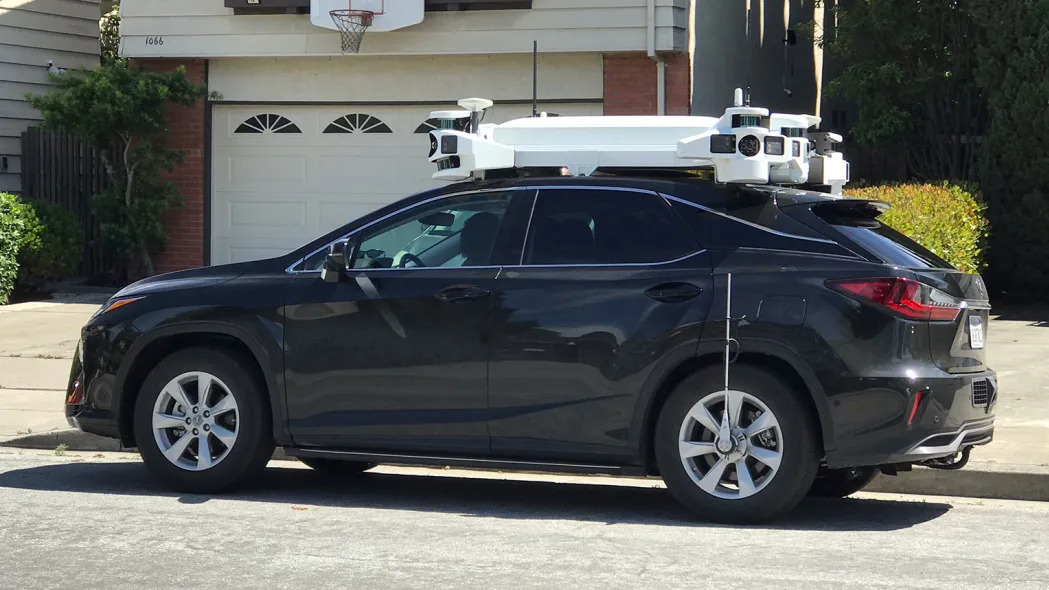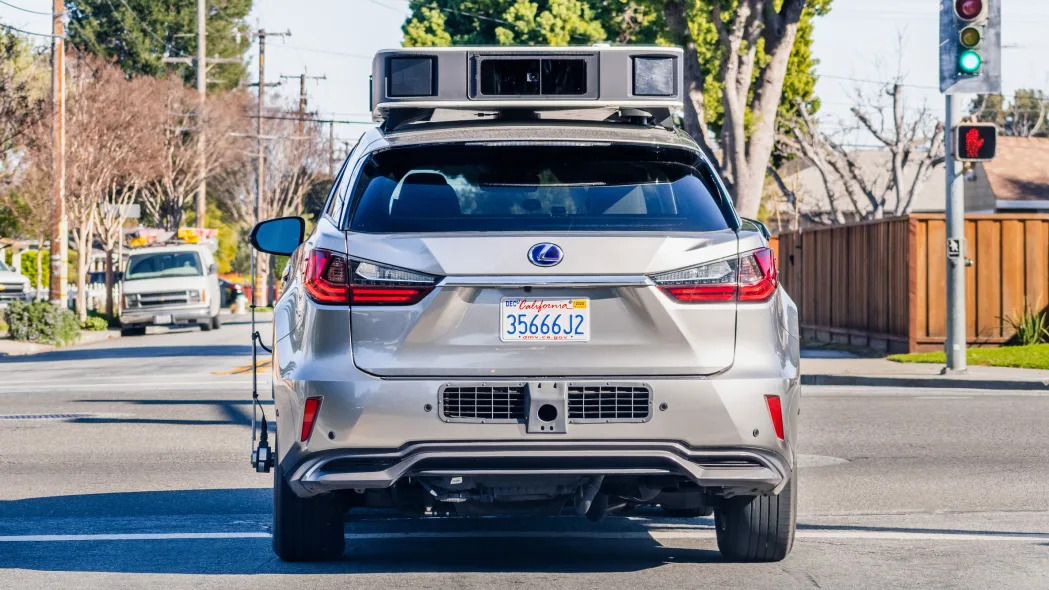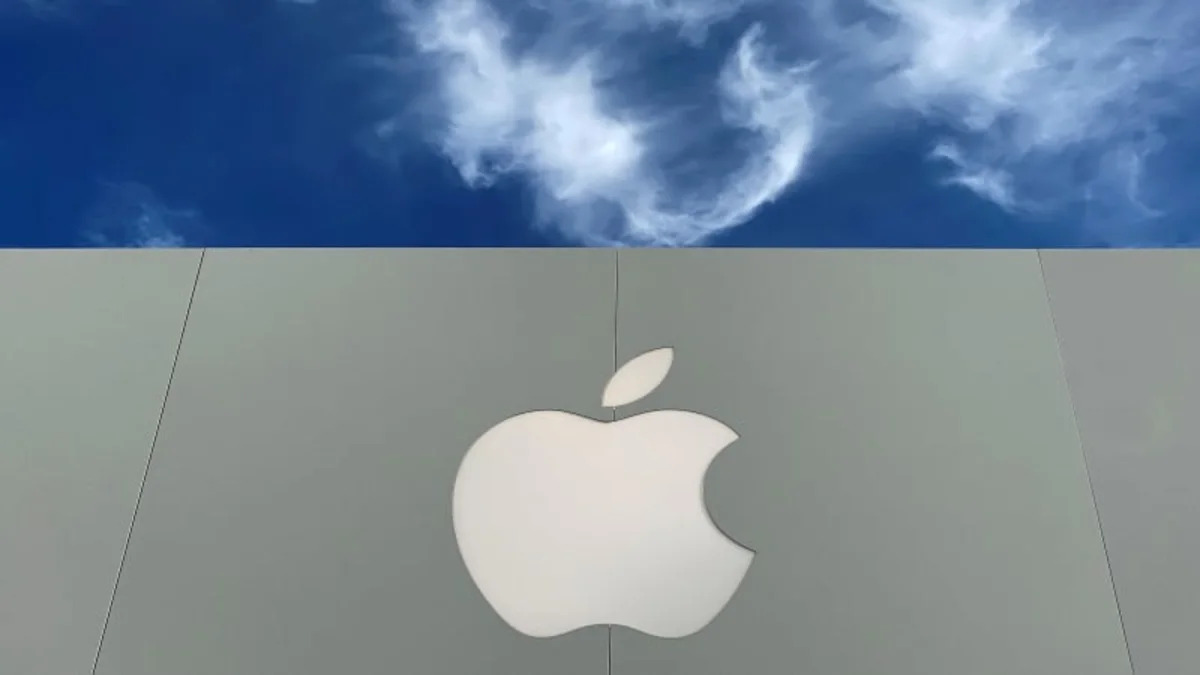Apple’s secretive car project died without ever seeing the light of day. It’s a fitting end, considering we’ve collectively spent the last decade aware of it without really knowing too much about what the tech colossus was planning.
Neither has Apple, apparently. Dozens of contemporaneous reports over that span clued the public into the vague outlines of what Tim Cook was trying to accomplish. But even as thousands of people cycled through the so-called Project Titan – to the point that at times it felt like almost every EV engineer in the industry was obligated to do a tour of duty – the fine details remained obscure. The only thing that ever seemed certain was that Apple couldn’t settle on what, exactly, it wanted to build for more than a year or so at a time.
Tuesday’s shock announcement, made internally and ferreted out initially by Bloomberg’s Mark Gurman, brings an end to that decade of speculation. The end of Project Titan will surely spark new questions about the state of the EV and AV industries, or where Apple will find its next big source of revenue. It also offers a chance to reflect on how remarkably scattershot the project was in the first place.
Apple’s modus operandi is to let others establish new categories, and then use its design and logistics muscles to grab hold of the market and squeeze. It’s trying to do that now with the Vision Pro. Over the sweep of Project Titan, though, it was never clear which category Apple wanted to remake: autonomous vehicles, or electric cars. At times it looked like one or the other, and for a stretch it seemed like Apple would try both. That unwillingness to commit may be what ultimately doomed the project.
2013

Aerial view of Apple corporate headquarters building in Silicon Valley. Image Credits: simonkr/Getty Images
Apple had its eye on the electric vehicle space before it truly spun up Project Titan. The San Francisco Chronicle reports in 2013 that Apple’s M&A whiz, a former Goldman Sachs banker named Adrian Perica, secretly met with Elon Musk.
Perica had been on a buying spree at that point for Apple, and Tesla was still struggling to establish itself as an EV automaker as it ramped production of the Model S sedan.
Nothing comes of the meeting, though it wouldn’t be the last time Apple and Musk would cross paths. It’s also right around this time that Tesla poaches Doug Field, who helped lead many Apple hardware design efforts, to become vice president of its vehicle program.
2014
Apple secretly begins working on Project Titan, accumulating talent from legacy automakers like Ford and Mercedes-Benz, as well as employees from other internal divisions. Cook reportedly approves the project and gives iPhone and iPod lead (and former Ford engineer) Steve Zadesky the freedom to build a team of 1,000 people to operate off-site.
Meanwhile, Apple executives tour the world looking for partners, or perhaps even just advice. Some meet with contract manufacturers like Magna Steyr, while Cook reportedly personally tours BMW’s facilities.
2015
The reporters are on to Titan. The Financial Times breaks the news in February that Apple has been hiring automotive experts to work in a secret research lab, and the Wall Street Journal immediately follows that up by reporting that the company is working on an electric vehicle that it describes as “minivan-like.” The WSJ report also claims that self-driving tech “is not part of Apple’s current plan.”
The news is a shock, though the automotive industry initially shrugs it off. Dieter Zetsche, who was the head of Mercedes-Benz parent company Daimler at the time, says one week later that he isn’t losing any sleep over Apple’s interest in building a car.
The hunt is on for more information. People hone in on the fact that Apple hired designer Marc Newson, who once created a concept car for Ford. Time Magazine asks: Could that be a hint of what Apple wants to make? AppleInsider finds the off-campus building – which has its own codename, SG5 – where the Project Titan team has set up shop.
At Apple’s shareholder meeting in March, someone tells Tim Cook he wants the company to buy Tesla. Cook dodges and says he’d like Tesla to adopt CarPlay. By this time, Tesla has hoovered up at least 150 Apple employees, far more than from any other company.
In May, chief operating officer Jeff Williams says at an event: “the car is the ultimate mobile device, isn’t it?" Apple still hasn’t publicly confirmed the project, though.
Things accelerate. Germany’s Manager Magazin reports in July that Apple has spoken to BMW about leveraging the EV tech that powers its i3 compact car. The Guardian turns up documents in August that show, actually, Apple is interested in developing a self-driving car and that it’s scouting for locations to test the tech. Cook meets with then Fiat-Chrysler boss Sergio Marchionne.
The New York Times reports in September that Apple is still split on whether it should chase a self-driving car, an electric vehicle, or both – an omen for the many pivots ahead. But the project is up to 600 people and Apple is pulling people from other teams, like the one working on the Watch, to help move it forward. Apple is also building out Titan’s ranks with Tesla employees. Musk calls Apple the “Tesla graveyard” but says “the car is the next logical thing to finally offer a significant innovation.” The Wall Street Journal reports that Apple is targeting an aggressive 2019 ship date.
2016
Momentum starts to falter. Jony Ive reportedly expresses “displeasure” with the progress being made in late 2015 and early 2016, and hiring cools. Zadesky leaves the project (but stays at Apple) and it’s reported that the Titan team “encountered some problems… in laying out clear goals for the project.”
In one of the more infamous moments of Apple Car lore, MotorTrend teases an “exclusive” reveal of the Apple Car in April… only to reveal that it’s essentially created a blobby mockup of what it could look like and slapped it on the cover of its magazine.
By July, Titan’s ship date slips to 2021, and Apple taps Bob Mansfield, one of Steve Jobs’ top hardware executives, to take over.
In September, the Financial Times reports Apple approached McLaren about a potential acquisition or a strategic investment.
But one month later, Bloomberg reports Apple is cutting hundreds of members of the Titan team as the company pivots away from building an electric car and towards developing an autonomous driving system. Executives allegedly give the team until the end of 2017 to prove out the tech and “decide on a final direction.” Mansfield is reportedly the one who orders the strategy change. A source calls it “an incredible failure of leadership.”
2017

Sunnyvale, California, USA - May 22, 2019: Lexus RX450h on suburban street with Apple Project Titan autonomous vehicle hardware mounted on roof. Image Credits: NNehring/Getty Images
Apple receives a permit from California’s Department of Motor Vehicles to test its autonomous driving tech using three Lexus SUVs in April.
The company’s push into real-world AV testing comes at a time when self-driving cars are all-the-rage. Google has by this point spun out its own autonomous vehicle program, called Waymo. Uber is building up a self-driving tech effort after poaching dozens of experts from Carnegie Mellon. (Those two companies are also, at this point, already locked in a nasty legal battle about allegedly stolen AV tech.) General Motors has acquired Cruise and started testing its own self-driving cars, and Ford has invested $1 billion in a new AV startup called Argo AI.
In June, Tim Cook finally confirms publicly that Apple has been working on an automotive project. “We’re focusing on autonomous systems,” he tells Bloomberg. “It’s a core technology that we view as very important.” He calls it “the mother of all AI projects.” But he dodges answering whether Apple will ever make its own electric car. “We’re not really saying from a product point of view what we will do.”
Apple plans to operate an autonomous shuttle that would bring employees from one building to another on its campus, The New York Times reports in August. The company also starts working on its own lidar sensor. Far-fetched ideas like spherical wheels helped sink the EV effort, the report states, along with “shifting priorities” and “arbitrary or unrealistic deadlines.”
The team begins growing again. New versions of its sensor-topped test cars are seen on the road in October.
2018
The self-driving test fleet expands, and will quickly triple in size. Apple hires away Google’s AI chief, John Giannandrea, in April. The project balloons to around 5,000 employees.
The big news of the year comes in August, when Apple re-hires Doug Field, who comes back from Tesla to help Mansfield push Project Titan forward. This sets off a firestorm of speculation that Apple will once again try to build its own car from the ground up. Also around this time: Musk says he tried but failed to set up a meeting with Apple to sell Tesla, as it was struggling to stay alive during the Model 3 production ramp.
2019
Apple starts the year with another cut and restructuring. More than 200 workers are let go from Project Titan.
Cook tells shareholders in March that Apple is “rolling the dice” on future products that will “blow you away.” Apple hires Tesla’s VP of engineering to bolster Titan.
In June, Apple acquires faltering AV startup Drive.ai. But the company scales back its California test fleet.
2020

Vehicle from Apple's fleet currently testing a self driving system on the streets of Silicon Valley. Image credits: Getty
The COVID-19 pandemic puts a pause on almost any meaningful reports of what Apple is up to with Titan, as workers – especially those in the Bay Area, where the strictest stay-at-home measures are implemented – go remote.
During this time, though, Apple starts up a brief discussion with EV startup Canoo about a possible acquisition or investment. The talks ultimately go nowhere.
Apple moves Giannandrea into a role that oversees the work being done on autonomous systems in December, and Mansfield retires.
And then Reuters drops a bombshell just before Christmas: Apple is once again planning to build a passenger vehicle with “breakthrough battery technology.” But this electric vehicle would also be autonomous, merging the two ideas at last. People on the team reportedly believe they can get this new version into production in 2024.
2021
Korean media begin reporting that Apple is courting Hyundai Motor Group to build the Apple Car as early as January, sending the automaker’s shares soaring. Hyundai confirms that they’re talking to Apple but downplay them, saying Apple is “in discussion with a variety of global automakers.”
Hyundai’s sibling automaker Kia starts approaching potential partners to build Apple’s car at a factory in Georgia, according to the Wall Street Journal. Nikkei reports in February that Apple was talking with Japanese automakers to build the car. But then The Korea Times reports in April that a partnership between LG and Magna is “very near” to winning the contract.
That same month, Cook once again mentions Apple’s vehicle project in an interview with Kara Swisher, but keeps the focus on autonomy. "The autonomy itself is a core technology, in my view," he says. "If you sort of step back, the car, in a lot of ways, is a robot. An autonomous car is a robot. And so there's lots of things you can do with autonomy. And we'll see what Apple does."
He also cautions that many of Apple’s ideas “never see the light of day.”
Nevertheless, Apple starts talking to China’s CATL and BYD about sourcing batteries for the Apple Car. A senior white house economic adviser tells Reuters that “Apple is talking about building advanced battery production facilities” in the U.S.
In June, Apple hires Ulrich Kranz. Kranz was a co-founder and CEO of EV startup Canoo, but also helped lead the development of BMW’s i3 EV.
The executive door keeps revolving, though, as Doug Field once again leaves Apple – this time to go work at Ford. Apple turns around and taps Kevin Lynch, one of its top software executives, to run Project Titan.
Right after this, Apple reportedly decides to go it alone and eschew any partnership with another automaker.
Then, yet another pivot. In November, Bloomberg reports that Apple is “refocusing the project” around “full self-driving capabilities.” Lynch reportedly pushes to make a car that can drive itself completely right out of the gate, with no steering wheel or pedals, by 2025.
Apple reportedly “believes it has completed much of the core work on the processor it intends to eventually ship in the first generation of the car.” To bolster this effort, Apple hires CJ Moore, the former head of Tesla’s Autopilot division.
But the company reportedly remains split on what the business would be, as it is still debating between personal ownership or a fleet model.
2022
CJ Moore leaves Apple within six months. The Information publishes a report detailing some of the trouble Apple has had getting the self-driving tech to work.
Once again, Bloomberg reports another pivot in December. This time, Apple reportedly scales back ambitions after realizing that a fully autonomous vehicle without a steering wheel or pedals is not feasible.
The company reportedly pivots to a car that would only be autonomous on highways, and Apple even considers using a “remote command center” to assist drivers or control the vehicles during emergencies. The target date slips to 2026.
2023
Apple has steadily built its test fleet back up in California. But news about the project’s progress dries up. In September, analyst Ming-Chi Kuo exasperatedly muses that the “development of the Apple Car seems to have lost all visibility.” He writes that he doubts Apple can mass-produce the car without an acquisition of another automaker.
Behind the scenes, Apple’s board of directors starts pressuring the company’s leadership about the project, according to Bloomberg.
2024
Apple reaches a “make-or-break point” with the project in January, Bloomberg reports, as the release date is pushed to 2028 and the team reportedly pivots again to an “EV with more limited features.”
This new goal came after “a series of frenzied meetings that included Apple’s board, project head Kevin Lynch and Chief Executive Officer Tim Cook,” according to the report. Apple still doesn’t have a formal prototype.
One month later, Apple kills Project Titan.


Sign in to post
Please sign in to leave a comment.
Continue